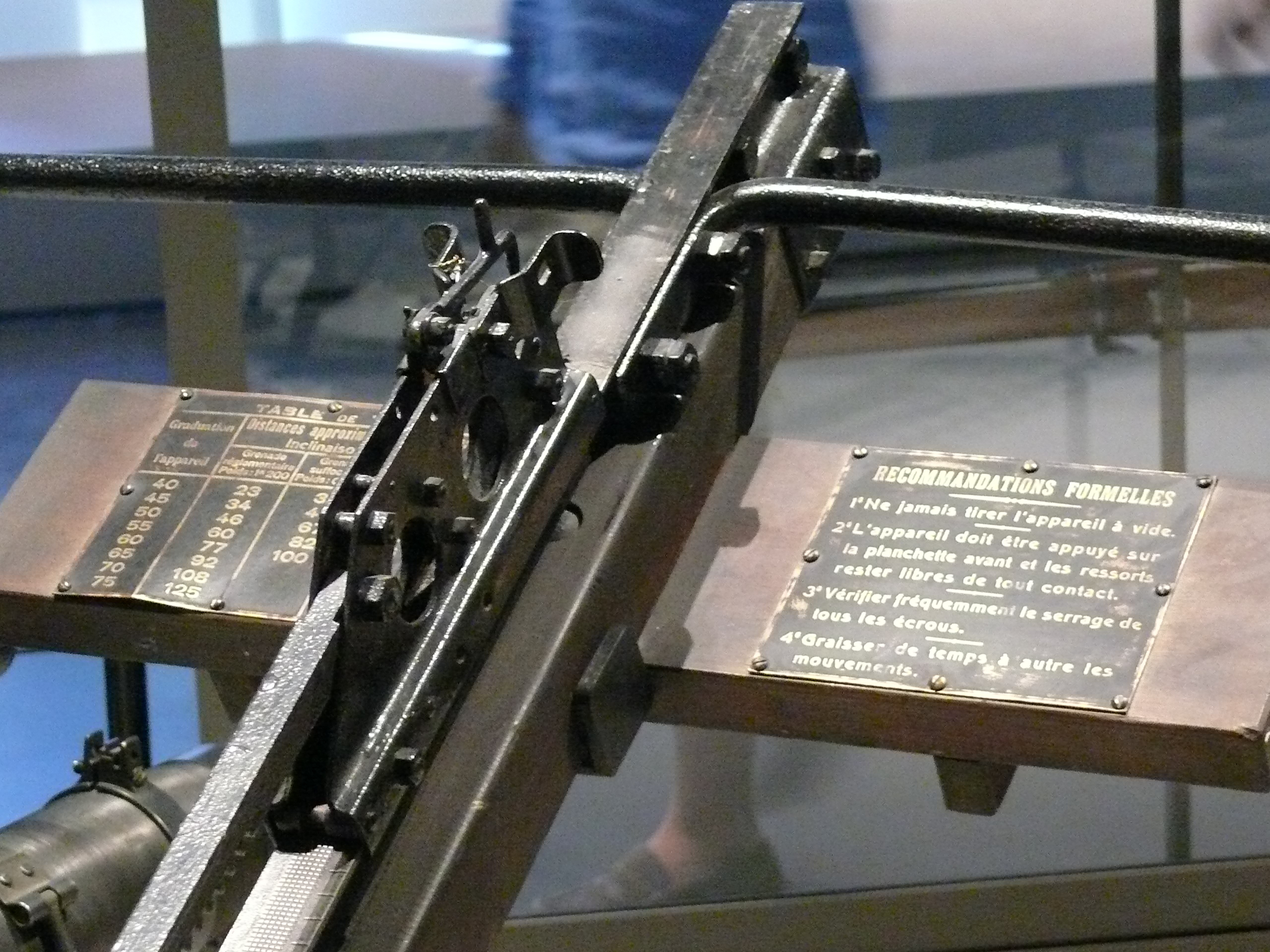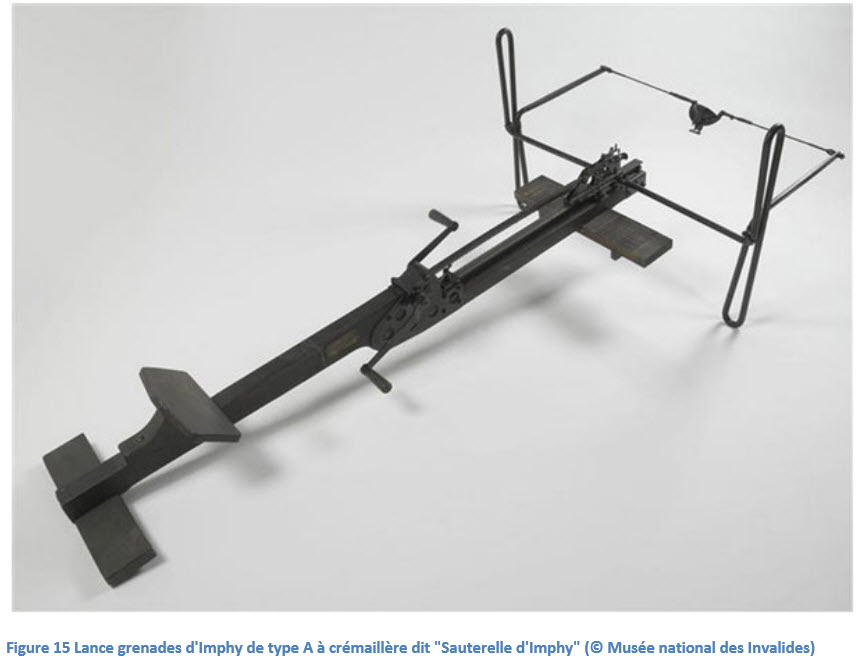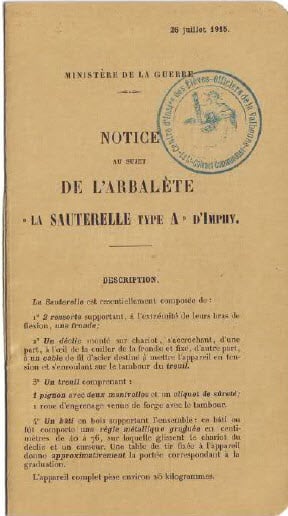The device was called L’Arbalete la Sauterelle Type A D’Imphy, and it quite literally was a crossbow, using the tension of two bent steel rods to provide the energy storage that sinew provided back when the Romans were building this sort of thing. A metal cup held a spherical Type 14 grenade (weight roughly 1kg/2.2lb), and a pair of hand cranks on a rack and pinion mechanism were used to cock it.

The name translates to “The crossbow the Grasshopper” according to Google translate but if any native French have a better insight it would be appreciated.

The device was designed by a French artillery officer by the name of Elie André Broca… These crossbows were actually fairly sophisticated, and Broca put together a company to manufacture them. They would turn out to be fairly well-liked by troops, and did a good job of filling the technology gap until more modern light mortars could be developed and mass produced…

https://www.forgottenweapons.com/larbalete-la-sauterelle-type-a-dimphy/
For French readers: ~~http://kaloujm.com/lance_grenade_de_tranchee.pdf~~ https://www.kalasnyikov.hu/dokumentumok/lance_grenade_de_tranchee.pdf


Was the grenade on a timed fuse, or did it detect the impact?
Based on this picture of factory workers in combination with Ian’s description I believe the Type 14 grenades are 1914 ball grenades which come with a 4 second fuze. Impact grenades did exist at the time though.
Wait, there were hand-thrown, impact-fused grenades in ww1? I thought those didn’t come around till much later, and weren’t exactly well liked for quite a while.
One source I saw had the Grenade P1 ‘Pear’ grenades that had a system like that but it sounds like they weren’t good at fragmentation.
https://www.passioncompassion1418.com/decouvertes/english_grenades_fr.html
Actually here’s another:
https://thebignote.com/2021/07/31/french-hand-grenades-of-the-great-war-part-two-the-percutante-no-1-p1/